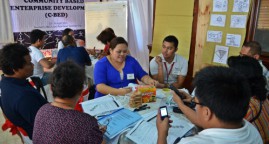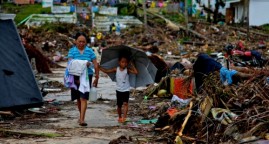A Cuban model for a resilient Caribbean
02/25/2015. With a population of 36 million, the Caribbean region is home to a diverse array of languages and cultures, to islands large and small, to major coastal cities and small mountain villages. But for all its diversity, its countries and territories share an important trait – exposure to a yearly hurricane season that can, at times, have devastating impacts.
In response to such hydro-meteorological threats, the Cuban government has collaborated with UNDP Cuba and UNDP’s Caribbean Risk Management Initiative since 2005 to create the Risk Reduction Management Center (RRMC), a model of local risk reduction management. At the heart of the model is the promotion of local level decision-making that relies on coordinated early warning systems, risk and vulnerability studies, communications systems, effective database management and mapping, GIS, and community preparedness.
Read the article and watch the video on the United Nations Development Programme website
Related Articles
The private sector: stepping up
January 2015. This article draws on interviews with over 30 representatives from the private sector, civil society, the UN, the IFRC/Philippines Red Cross and the government of the Philippines…
Humanitarian partnerships: reality lags behind the rhetoric
January 2015. Just over a year after Typhoon Haiyan devastated parts of the Philippines important lessons need to be learnt about how international actors partner and work with national organisations.
Record support for advancing Paris Climate Agreement
04/22/2016. 175 countries signed the Paris Agreement at a ceremony at UN Headquarters






